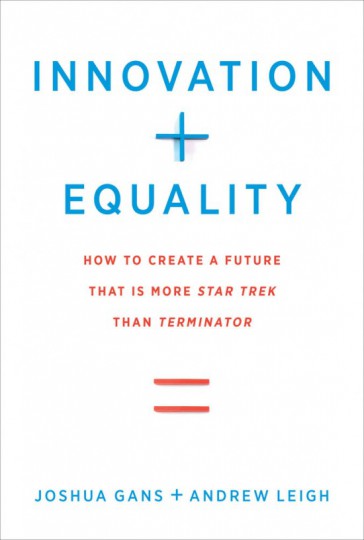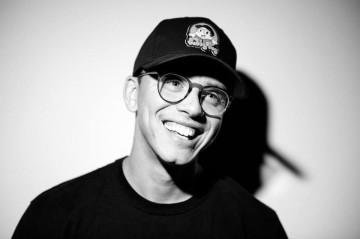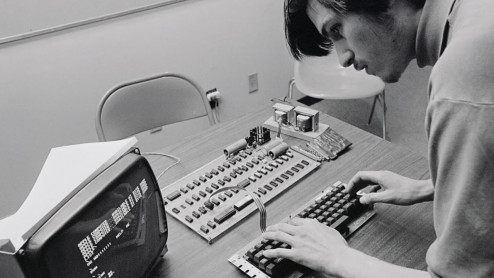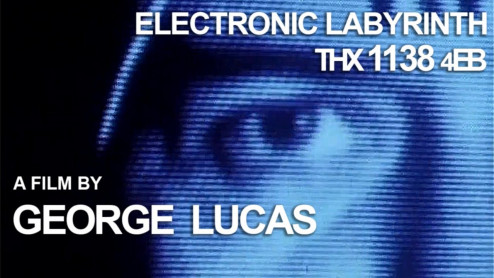
The Price of Progress08.11.2019
Excerpted and adapted from „Innovation + Equality: How to Create a Future That Is More Star Trek Than Terminator” by Joshua Gans and Andrew Leigh (The MIT Press, 2019).
The United States today is more unequal than it has been in generations and more technologically advanced than ever. As the top 1 percent increases its share of the world’s wealth, advances in artificial intelligence are driving new breakthroughs in facial recognition, language translation, and abstract strategy games. While the earnings gap between highly educated workers and the unskilled widens, CRISPR technology lets scientists edit genomes.
For robot designers, data analysts, and medical researchers, it can be the best of times. To paraphrase technology entrepreneur Jerry Kaplan, theirs is a future represented by Star Trek—a world where technology’s benefits are widely shared. For someone with few skills, few assets, and no job, it can feel like the worst of times. Theirs is a future that can seem like the dystopian one of Terminator, after a self-aware artificial intelligence realizes that it no longer needs humanity.
Perhaps we can’t all be billionaires, but there’s no reason to be sanguine about rising inequality and falling mobility.
Some people argue that inequality is the price we must pay for innovation. They say that we can’t all be billionaires. They assert that if we try to make society more equal by raising the top tax rate, it could deter risk taking and innovation. If we have to choose between having more stuff and distributing it fairly, they conclude that we should go for growth over equity.
We believe this is a false trade-off. Perhaps we can’t all be billionaires, but there’s no reason to be sanguine about rising inequality and falling mobility. The central argument of our book is that there are many ways that society can improve innovation and equality. This means we can have a bigger cake and slice it up more fairly. Indeed, when we overlook these ideas, we miss the chance to make society more entrepreneurial and more egalitarian.
Over the past generation, all kinds of gaps have opened up in the labor market. Half a century ago, a high school graduate had to work for 11⁄2 hours to earn what a college graduate earned in an hour. Now, a high school graduate must work for 2 hours to earn what a college graduate earns in an hour. The wage gap between occupations has grown wider too. One study found that over the past quarter century, the wage increases received by janitors and security guards have been only one-tenth of the average for all employees.
The average worker back then would have had to work for 20 years to earn what their CEO took home in a year. Now, they would have to work for an impossible 312 years to earn the boss’s annual salary.
While the bottom is dropping out, the top is accelerating away. In today’s dollars, CEOs of large firms in the mid-1960s earned, on average, around $900,000—a total that includes salary, bonuses, stock options, and incentive pay. They currently earn $18.9 million. Put another way, the average worker back then would have had to work for 20 years to earn what their CEO took home in a year. Now, they would have to work for an impossible 312 years to earn the boss’s annual salary.
Some people have dropped out of work altogether. Labor economists refer to people aged twenty-five to fifty-four as “prime aged.” In the 1960s, the employment rate for men in this group was 94 percent. Since 2010, it has averaged just 83 percent. Even prime-aged women, whose workforce participation rates skyrocketed in the postwar era, have a lower employment rate this decade than in the 1990s or 2000s.
[...]
Unresolvable Uncertainty
Innovation typically involves two stages: exploration and exploitation. Initially, you might have a new technology (such as artificial intelligence or the CRISPR gene-editing tool). There may be ten ideas of how to create innovations out of this new technology. You do not know which one to pick. This is like closing your eyes and reaching into a bag of apples, some of which have gone bad. You might pull out a crisp one (representing a good idea to work on) or a rotten one (representing a bad idea). If you find a good apple, you move on from exploration (pulling apples from the bag) to exploitation (sinking your teeth into that good prospect).
Suppose I told you that in your bag of ten apples, there is a fifty-fifty chance there are nine crisp apples and a fifty-fifty chance there is only one crisp apple out of the ten. If you then pull out an apple and it turns out to be rotten, you will actually learn something about your prospects. Specifically, it is more likely that it is a bag with few crisp apples. Put your hand in a second time and get another rotten one, and you are even more sure. The point here is that using exploration, you learn more about what you are dealing with.
Remember that there are two kinds of possible bags. The good bag has nine out of ten crisp apples. The bad bag has just one out of ten crisp apples. If you’re hungry, then the first challenge is to figure out whether you’re holding a good or bad bag.
Chicago economist Frank Knight famously distinguished between risk and uncertainty. Risk, he said, was what happens when you know the probabilities. That is, you know how many rotten apples are in your bag of ten. But uncertainty is when you don’t know the precise odds. In that case, you have to figure out what the whole bag looks like. Is the probability that there are lots of crisp apples 10 or 90 percent?
Every innovator works in the realm of risk. Not even the world’s top science laboratories have a 100 percent success rate. Even the best labs produce some dud ideas.
In this example, apple eating will always be risky, but it need not be uncertain. Once you’ve eaten two crisp apples from a bag, you know you must be holding a good bag of apples rather than a bad one. Now you can start munching Granny Smiths more readily than you would do if you were holding a bad bag of apples. Once you decide you’ve got a good bag, you’ve sorted out the issue of uncertainty. Now you can get on with taking risks.
Every innovator works in the realm of risk. Not even the world’s top science laboratories have a 100 percent success rate. Even the best labs produce some dud ideas. But they try to ensure they’re eating good bags of apples. They’ll never stop being risk takers, but over time they can reduce their uncertainty about the fundamental idea-generating process.
We take as our starting point that there is uncertainty regarding future technological change and uncertainty regarding its impact.
Innovators don’t immediately discover the best application of their technologies. Watt’s steam engine was initially thought to be of use for pumping water from mines. It turned out to be the engine of the transportation revolution. At the dawn of the television age, 20th Century Fox cinema executive Darryl Zanuck scoffed, “Television won’t be able to hold on to any market it captures after the first six months. People will soon get tired of staring at a plywood box every night.” Lawyers at Bell Labs failed to patent the laser because they saw no applications for it in telecommunications. It underpinned not only CDs and DVDs but also optic fiber, the backbone of the internet.
For these reasons, we take as our starting point that there is uncertainty regarding future technological change and uncertainty regarding its impact—including where and whether that impact will be favorable, unfavorable, or both. Any policy response must be predicated on this uncertainty. For instance, it makes little sense to develop new educational programs based on the forecast of the future of particular professions. Instead, we should ask ourselves whether current and future education programs are embracing uncertainty, and playing a role in helping protect people against unfavorable outcomes.
This is a common theme. When there is unresolvable uncertainty, we often need to consider policies in terms of their insurance value with respect to that uncertainty rather than their value in a particular state of the world.

see also
- Arthur I. Miller | The Artist in the Machine
Trends
Arthur I. Miller | The Artist in the Machine
- Here Are the New Papaya Films Photographers
People
Here Are the New Papaya Films Photographers
- New Meanings. See the Music Video for Wicked Game by DJ Duo Yola Recoba Papaya Films
News
New Meanings. See the Music Video for Wicked Game by DJ Duo Yola Recoba
- Logic, Bobby Tarantino or Young Sinatra?

People
Logic, Bobby Tarantino or Young Sinatra?
discover playlists
-
Inspiracje
 01
01Inspiracje
-
filmy
 01
01filmy
-
PYD: Music Stories
 07
07PYD: Music Stories
-
George Lucas
 02
02George Lucas
